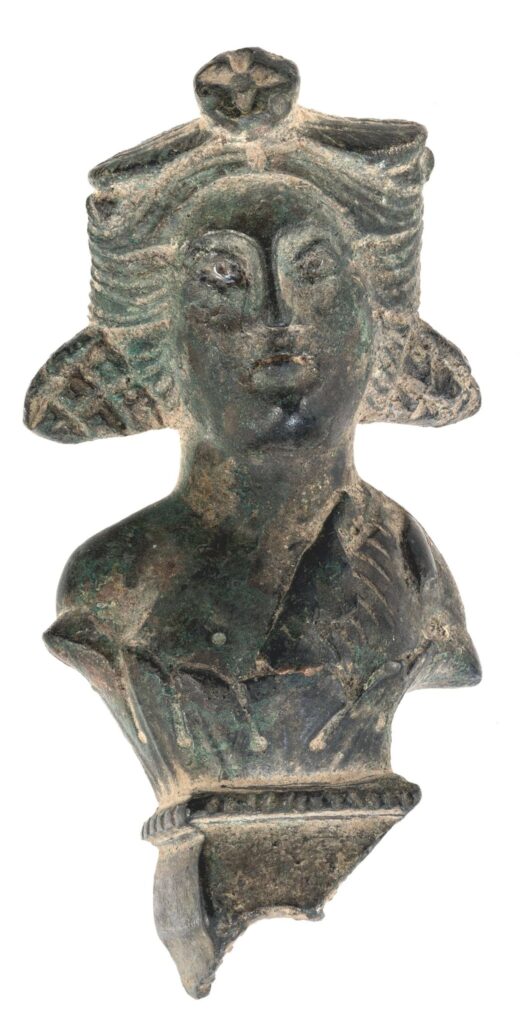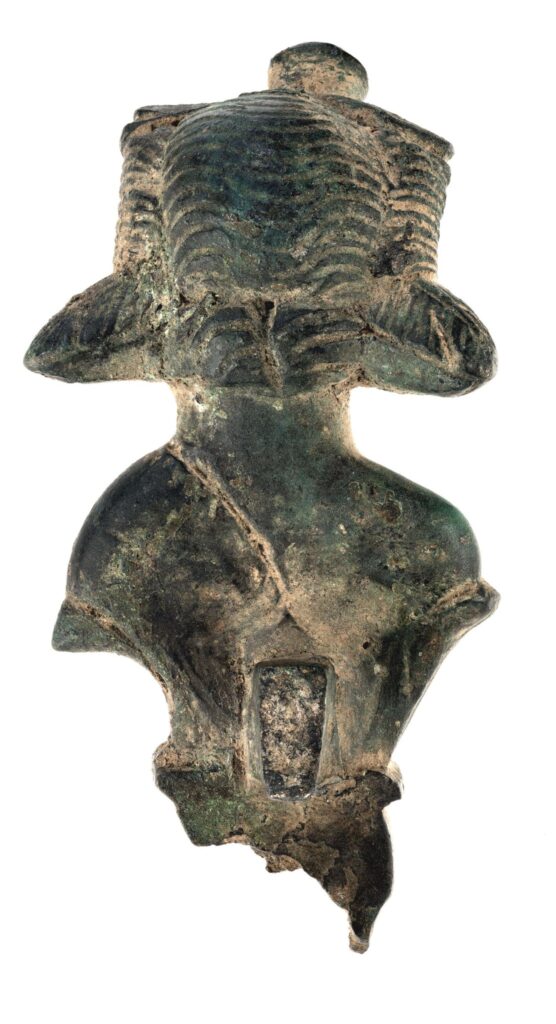In a stunning discovery, a three-thousand-year-old ancient Egyptian figurine of the god Osiris has been unearthed in a former Nazi SS hospital in the Lublin province. The figurine is part of a long-lost collection of antiquities that have been the subject of a search by specialists for decades.
In the village of Kluczkowice about 30 km west of Lublin, researchers found two figurines depicting Osiris, the Egyptian god of death. The researchers also discovered a bust of Bacchus, who, according to Roman mythology, was the god of wine.

Researchers also discovered a bust of Bacchus, who, according to Roman mythology, was the god of wine.
Finding ancient Egyptian and Roman antiquities in Poland is highly unusual. Therefore, after the discovery last year, the objects needed to be thoroughly analyzed.
“Such an unprecedented find in our area raised doubts about the authenticity of the relics,” the Lublin voivodeship heritage protection office reported.
A few days ago the heritage protection specialists were finally able to announce the discovery as genuine.

The finds were made in the palace in Kluczkowice which, until 1942, was owned by the Kleniewski family.
“Thanks to cooperation with the National Museum in Lublin and scientists from the Department of Archaeology at Warsaw University, it was possible to confirm that we are dealing with original objects from ancient Egypt and ancient Rome,” they reported.
In May last year, local treasure hunter Krzysztof Kozłowski led an exploration on the grounds of the palace in Kluczkowice with the permission of the heritage protection office when he discovered a bronze figurine.
After immediately alerting heritage protection authorities, Dr Łukasz Miechowicz of the Polish Academy of Sciences went to the site to search the area.

After 1942, the palace was used as a hospital by the SS.
“Suddenly, 10 meters away from the first figurine of Osiris, we came across another one,” he said. “It is sensationally well preserved.”
The specialists dated the figure of Osiris to the 1st millennium BC and the bust of Bacchus to the 1st century AD.
Meanwhile, Dr. Lukasz Miechowicz of the Institute of Archaeology and Ethnology of the Polish Academy of Sciences in Warsaw was able to confirm that the relics were part of a collection of antiquities that were kept in the palace in Kluczkowice until World War II by its then residents, the Kleniewski family.
Dr. Miechowicz believes that the figures were purchased by Maria Kleniewska when she travelled to Egypt in 1904 with her four daughters and brought back to Poland as artifacts that she intended to display in a chamber of antiquities.
They stayed in Helaun, which in the interwar period was popular with affluent Poles. In 1932, Marshal Józef Piłsudski stayed there for treatment.
“She writes about it in her memoirs, which have been published. Her health declined, and it was a fashionable resort among wealthier families at the time. She also travelled a bit and did some sightseeing, from Alexandria to Cairo,” Dr. Miechowicz added.

Although the finds were first made last year, it’s only now that they have been authenticated by analysts.
The bust of Bacchus was most likely a fragment of a Roman tripod, a similar example of which was discovered in the 18th century near Vesuvius in Italy, and is now in the collection of the British Museum in London.
The Kleniewski family lived in the palace in Kluczkowice until 1942 when their property was confiscated by the occupying Germans and handed over to the SS. The family then left for Warsaw, taking with them only personal belongings.
In the same year, the palace became a place of convalescence for German soldiers who had been injured at the front. After the war, the palace was thoroughly looted and the collection of antiquities has been lost ever since.

The ancient figurines will be donated to the National Museum in Lublin after further analysis.
Historians now believe the family members hurriedly hid some of the precious items in the grounds before leaving the palace.
Dr. Miechowicz said that he had been looking for traces of this collection for years.
“Capturing traces of a valuable collection that was lost years ago is of great importance for science, cultural heritage, and tourism,” hesaid.
The ancient figurines will be donated to the National Museum in Lublin after further analysis.








